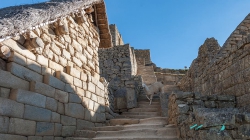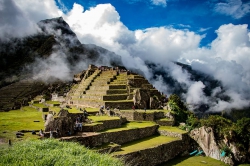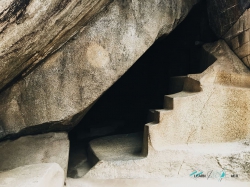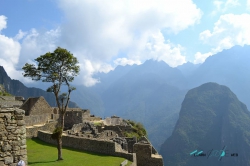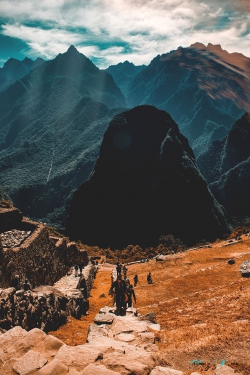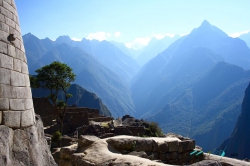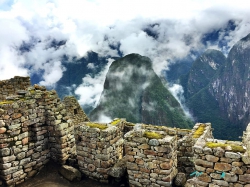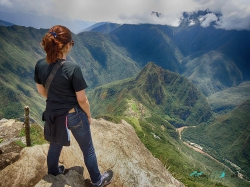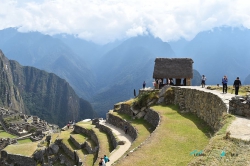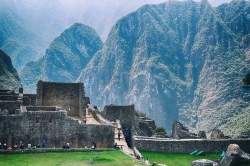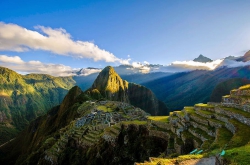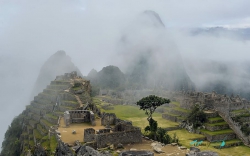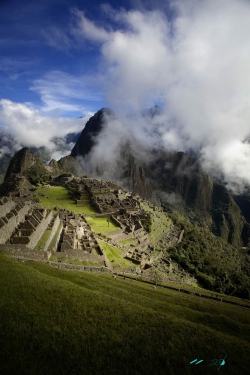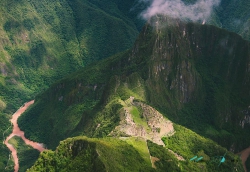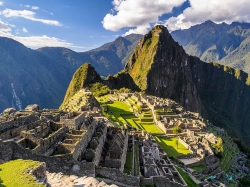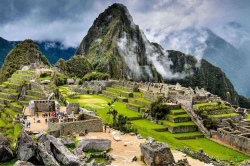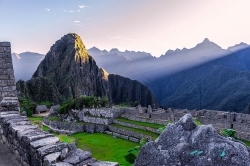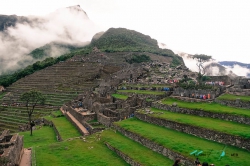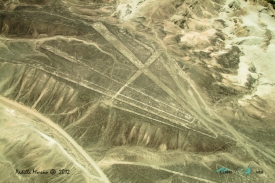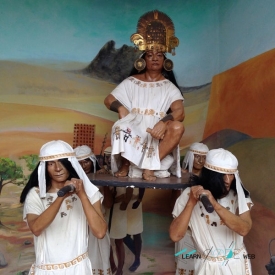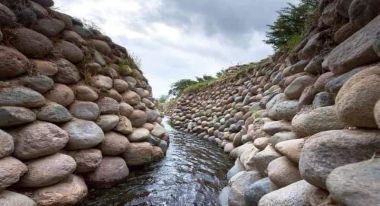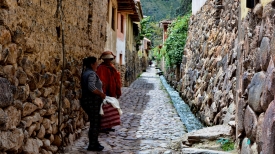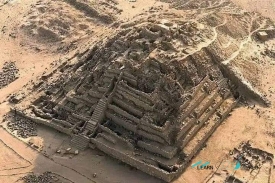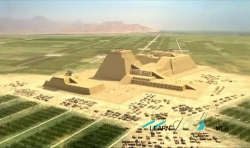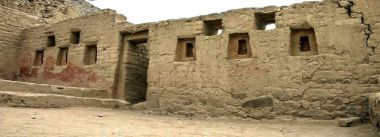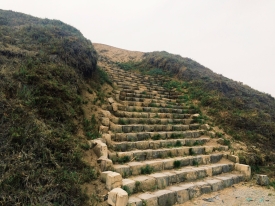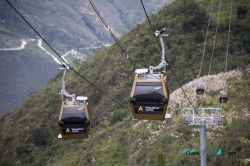ABOUT Machu Picchu
Machu Picchu is the contemporary name given to a llacta —ancient Andean Inca town— built before the 15th century, located in the Eastern Cordillera of southern Peru, in the Andes mountain range at 2,430 meters above sea level. It is located in the Cusco region, province of Urubamba, district of Machupicchu, on the Sacred Valley of the Incas, 80 kilometers northwest of the city of Cusco, city of Peru and where the Urubamba River flows, a river that crosses the mountain range and originates a canyon with a tropical mountain climate. According to many scholars, its original name would have been Llaqtapata.
According to documents from the mid-16th century, it had a private character. However, some of its best constructions and the evident ceremonial nature of the main access road to the llaqta account for its origin prior to Pachacutec and its presumable use as a sanctuary. religious. Both uses, that of a palace and that of a sanctuary, would not have been incompatible. Even when its supposed military character is disputed, so the popular qualifiers of "fortress" or "citadel" could have been overcome.
Machu Picchu is considered, at the same time, a masterpiece of architecture, engineering and environmental design in harmony with its surroundings. It is unanimously considered the masterpiece of Inca construction, developing a visually beautiful and efficient urban complex. Site preparation and foundation engineering are examples of advanced Inca development. It can be said that in Machu Picchu the Incas displayed all the ancestral Andean knowledge, such as hydrogeological engineering, which allowed them to supply the city with groundwater, which also supplied water to the agricultural system that surrounds Machu Picchu. Other fields of engineering that they took advantage of was Civil Engineering, building roads that connected the city with all corners of Tahuantinsuyo, such as hydrology and hydraulics, which allowed them to develop an urban drainage system that to this day surprises engineers who they visit the city. Without a doubt, Machu Picchu is an excellent example of early urban planning integrated into its surroundings.
Its peculiar architectural and landscape characteristics, and the veil of mystery that has woven around it much of the published literature on the site, have made it one of the most popular tourist destinations on the planet.
Machu Picchu was declared a Peruvian Historic Sanctuary in 1981 and has been on the UNESCO World Heritage List since 1983, as part of a whole cultural and ecological complex known under the name Machu Picchu Historic Sanctuary.
On July 7, 2007, Machu Picchu was declared one of the new seven wonders of the modern world in a ceremony held in Lisbon (Portugal), which was attended by one hundred million voters around the world.
According to documents from the mid-16th century, it had a private character. However, some of its best constructions and the evident ceremonial nature of the main access road to the llaqta account for its origin prior to Pachacutec and its presumable use as a sanctuary. religious. Both uses, that of a palace and that of a sanctuary, would not have been incompatible. Even when its supposed military character is disputed, so the popular qualifiers of "fortress" or "citadel" could have been overcome.
Machu Picchu is considered, at the same time, a masterpiece of architecture, engineering and environmental design in harmony with its surroundings. It is unanimously considered the masterpiece of Inca construction, developing a visually beautiful and efficient urban complex. Site preparation and foundation engineering are examples of advanced Inca development. It can be said that in Machu Picchu the Incas displayed all the ancestral Andean knowledge, such as hydrogeological engineering, which allowed them to supply the city with groundwater, which also supplied water to the agricultural system that surrounds Machu Picchu. Other fields of engineering that they took advantage of was Civil Engineering, building roads that connected the city with all corners of Tahuantinsuyo, such as hydrology and hydraulics, which allowed them to develop an urban drainage system that to this day surprises engineers who they visit the city. Without a doubt, Machu Picchu is an excellent example of early urban planning integrated into its surroundings.
Its peculiar architectural and landscape characteristics, and the veil of mystery that has woven around it much of the published literature on the site, have made it one of the most popular tourist destinations on the planet.
Machu Picchu was declared a Peruvian Historic Sanctuary in 1981 and has been on the UNESCO World Heritage List since 1983, as part of a whole cultural and ecological complex known under the name Machu Picchu Historic Sanctuary.
On July 7, 2007, Machu Picchu was declared one of the new seven wonders of the modern world in a ceremony held in Lisbon (Portugal), which was attended by one hundred million voters around the world.
The Best Pictures of Machu Picchu
Videos of Machu Picchu











